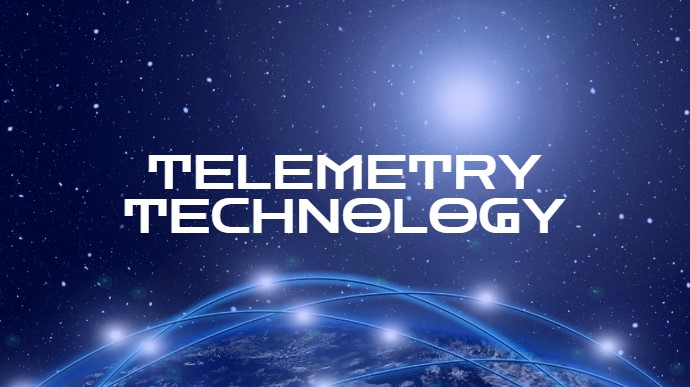Introduction to Telemetry Technology
Telemetry in technology refers to the automatic collection and transmission of data from remote sources to receiving systems for monitoring and analyses. This system makes it easier for businesses, researchers, and developers to understand and manage operations. Telemetry Technology finds great application across various areas such as healthcare, aviation, energy, and manufacturing. Risks are cut down and employee productivity is increased when conditions and performance can be monitored in real time. A vehicle equipped with telemetry sensors, for instance, will send data about speed, temperature, fuel economy, and many other factors to a central system. The Telemetry Technology is skilled at making use of precise data to make well-informed choices. This combines software, sensors, and communication systems to maintain seamless operations. By transforming unstructured data into useful insights, telemetry technology is also shaping the future of data management, analytics, and automation in light of an increasing reliance on digital systems.
The Growth of Telemetry Technology
Over the course of time, telemetry technology has progressed from straightforward wired systems to intricate wireless networks capable of transmitting data across continents. In the beginning, it was used for military and spacecraft tracking, but now it is used in every modern industry. The first systems had a limited range and data storage capacity. Telemetry technology became a scalable and dependable solution with the advent of the internet and satellite communication. Real-time analytics are provided by advanced systems that make use of edge devices, artificial intelligence, and cloud computing. Continuous monitoring that is applied to smart cities, automobiles, and industrial facilities makes use of telemetry technology. Automation enabled by it has been applied in critical areas, such as space exploration and environmental science. The rapid innovation of sensors and connectivity keeps expanding its scope.
Fundamental Telemetry
Tech Components Sensors, transmitters, communication channels, receivers, and processing units are the main parts of Telemetry Technology that work together to get and understand data. Sensors capture physical or environmental data such as temperature, pressure, or speed. The transmitter converts these readings into signals and sends them through a communication link, which may be wired, cellular, or satellite-based. The receiver then collects the data and passes it to a central processing system. Telemetry technology involves hardware and software in its integration, ensuring accuracy and reliability. Cloud platforms are increasingly being tapped for storage and analysis of big datasets. Modern telemetry systems also include dashboards for visualisation and performance tracking. Telemetry technology has made it possible for engineers and operators alike to manage assets remotely and predict failures before they occur, saving time and maintenance costs.
Also read: Cass Tech Football
Healthcare Telemetry Technology
Applications because it makes it possible to continuously monitor the vital signs of patients, telemetry technology has grown to become an essential component of healthcare systems. It aids doctors in monitoring patients’ heartbeats, blood pressures, and oxygen saturation levels from a distance. Devices that use telemetry technology to send real-time information about a patient’s vital signs to healthcare professionals aid patients with chronic illnesses. In situations where life or death is at stake, hospitals use centralised monitoring systems that can keep an eye on a large number of patients at once. Patients’ safety is improved because telemetry techmakes it less necessary to be physically present every second. It also assists in managing home healthcare wherein data gets transferred to clinics via secure networks. Telemetry Technology supports telemedicine by ensuring that accurate health data are available for virtual consultations thanks to advancements in mobile technology.
Technician for the aerospace and automotive industries in telemetry
Telemetry Technology plays a crucial role in the automotive and aerospace industries, where accurate data is crucial for safety and efficiency. In motorsport, Telemetry Technology is used to monitor things like engine performance, tyre pressure, and fuel consumption in real time. Engineers look at this data to find mechanical problems and improve the performance of automobiles. Telemetry Technology is essential in aerospace for communications from spacecraft, tracking flights, and monitoring equipment health. In order to guarantee both safety and efficiency throughout the course of operations, data from sensors is sent to ground control centres for analysis. Telemetry Technology allows manufacturing companies to analyse and develop better design and maintenance processes. It allows them to perform predictive maintenance on machines by identifying potential faults before failure.
The Role of Telemetry Technicians
Telemetry technology is revolutionising environmental monitoring by allowing the study of natural systems in real time. Scientists use telemetry technology to keep an eye on weather patterns, water levels, and changes in air quality. Remote sensors regularly send data to research stations for further analysis. Predicting natural disasters and studying climate change are made easier by this. Telemetry technology, for instance, uses GPS transmitters attached to wildlife to track animal migration. Without disturbing the ecosystem, it aids conservationists in understanding how it behaves. More accurate and timely decisions on environmental management are made possible due to the accuracy and immediacy of telemetry data. Telemetry technology also supports agricultural monitoring by providing farmers with data about soil and crop health. Using these insights leads to better agricultural efficiency and sustainability. With telemetry technology integrated into environmental studies, real-time data is available for global research and proactive ecological preservation.
The Benefits and Drawbacks of Telemetry
Technology Telemetry technology has a lot of benefits attached to it, such as increased efficiency, less downtime, and better predictive maintenance. Most industries no longer require a lot of hands-on inspection because it allows for remote monitoring. Through accurate, real-time data, telemetry technology also improves decision-making. However, there are particular difficulties, such as system integration and data security. Large information sets have to be safely stored and transmitted, considering issues related to cyber attacks. The other challenge is ensuring compatibility between various devices and software systems. Despite these issues, telemetry technology continues to revolutionise data management and automation. Encryption and standardisation-based updates are increasingly overcoming these obstacles. The deployment of telemetry technology is becoming simpler and less expensive. Even more dependable and effective telemetry networks will be able to respond to critical operations in both rural and urban settings with increased global connectivity.
Future Trends in Telemetry Technology
With rapid advancements in AI, the Internet of Things, and edge computing, the future of telemetry technology appears promising. By speeding up and increasing the accuracy of the data, these will boost the power of telemetry. Analytics powered by AI can automatically identify patterns that appear out of place and offer suggestions for preventing them. Telemetry technology will also benefit from 5G technology, enabling faster transmission and better connectivity among devices. Within the next few decades, telemetry technology will be used in smart infrastructure, autonomous vehicles, and advanced energy management systems. Based on an expansive cloud platform, cost-effective and scalable solutions continue to present themselves. Telemetry technology will become essential for making decisions thanks to real-time analytics and predictive insights. It ensures energy conservation by optimising resources, in keeping with the sustainability mantra.
Conclusion: The Impact of Telemetry Technology on Present-Day
Society Telemetry technology has emerged as an essential component of contemporary innovations, connecting digital intelligence and physical systems. Healthcare, environmental protection, transportation, and industrial automation all depend on it. Through the continuous transmission of data, telemetry technology contributes to safety, accuracy, and efficiency. The influence of this technology ranges from business operations to daily living, starting from smart devices up to connected homes. The real power of telemetry comes from its ability to turn data into actionable knowledge. Despite the challenges regarding data management and security, continuous advancements remain to strengthen the field. Performance and long-term viability are better for businesses that use telemetry technology. As global connectivity grows, telemetry technology is going to remain at the very centre of progress – it will shape a smarter, more responsive world and a truly data-driven one that will be

